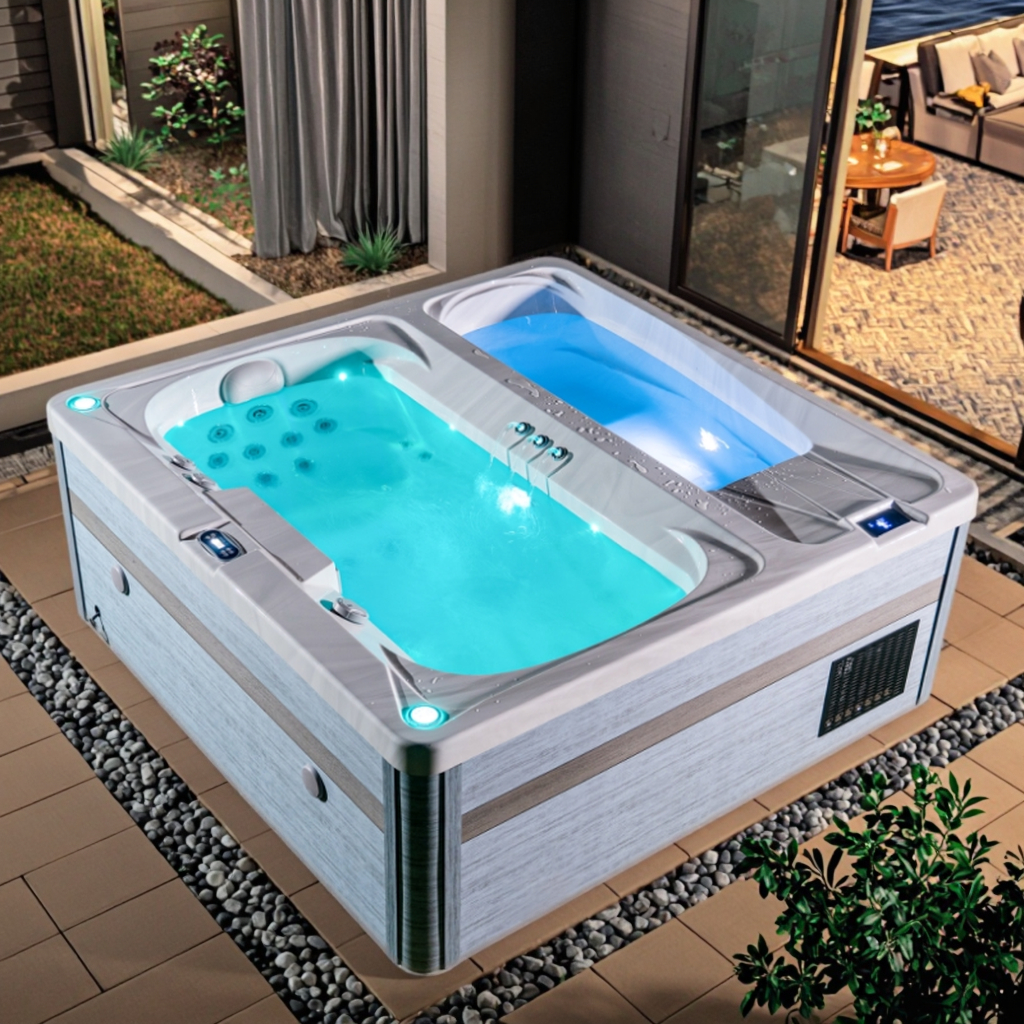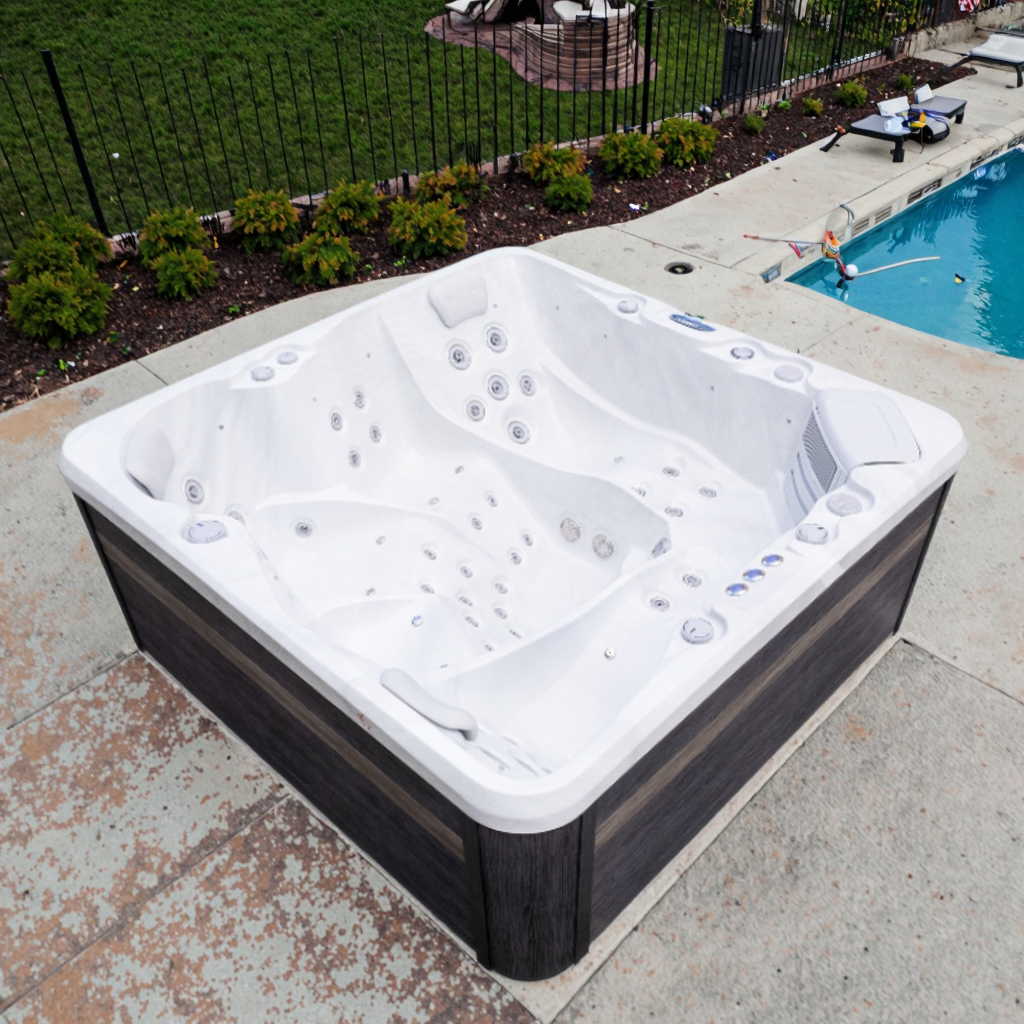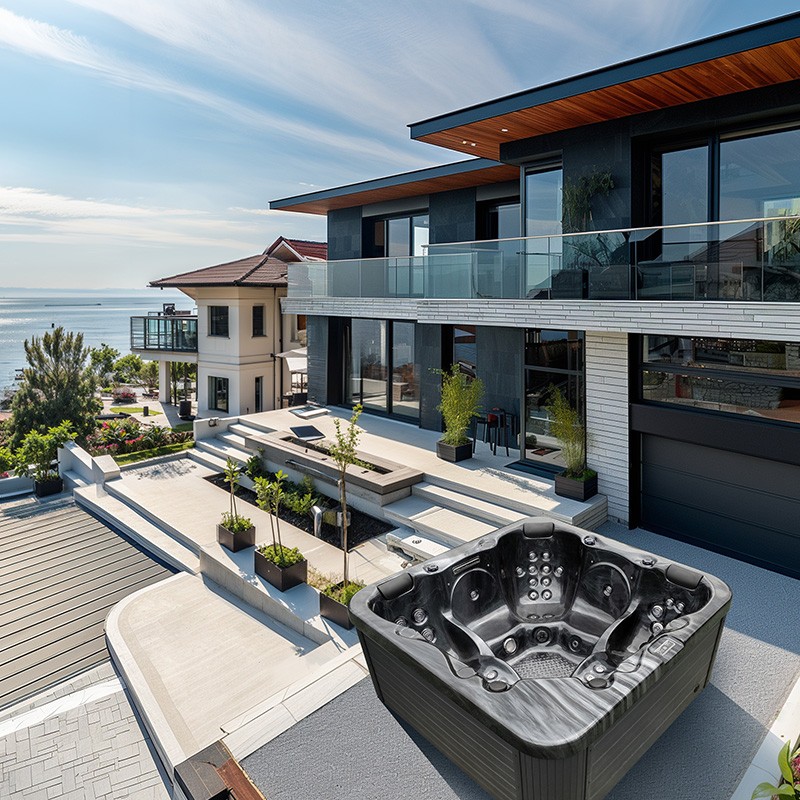
A Buyer's Guide to Second-Time Spa Hot Tubs
2025-09-05 15:35A spa hot tub, whether a sanctuary for relaxation or a centerpiece for family entertainment, plays a vital role in countless homes. However, for those who already own a spa hot tub, a second purchase is more than just a repeat. With technological advancements and a diverse market, the factors to consider when purchasing a spa hot tub a second time can differ significantly from those of the first.
From upgrading to upgrading to finding an option that better suits your current lifestyle, this guide will help you clarify your thinking and ensure your second purchase not only meets your needs but also exceeds your expectations.

Why should I buy a spa hot tub?
First and foremost, the answer to why you should buy a spa hot tub is particularly important for a second purchase. You may find that your spa hot tub needs have evolved, perhaps upgrading to a more efficient and comfortable model, or opting for a larger or smaller model to accommodate changes in family size.
The benefits of a spa hot tub are significant. Not only does it provide a relaxing environment that helps reduce stress, ease muscle pain, and improve sleep, it can also become a part of family entertainment. Whether it's a warm soak on a cold winter night or a refreshing spa experience in the summer, a spa hot tub is a luxury you can enjoy year-round.
Where should I buy a spa hot tub?
There are many ways to buy a spa hot tub, but choosing the right place can significantly impact your overall purchasing experience. Common channels include specialty stores, building material supermarkets, online retailers, and the used market.
• Specialty Stores: Buying a spa hot tub at a specialty store offers expert advice and comprehensive service. Specialty stores often have display models so you can personally experience the features of different models. Additionally, specialty stores often offer installation services and long warranties, making them a popular choice for many consumers.
• Building Material Supermarkets: If you're in the process of renovating or renovating your home, building material supermarkets can be a convenient option for purchasing a spa hot tub. While their selection may not be as extensive as at specialty stores, they often offer basic models and competitive pricing.
• Online Retailers: With the rise of e-commerce, purchasing spa hot tubs online has become increasingly common. Online retailers offer a wide selection and competitive pricing, but the downside is that you can't view or test the products in person. Before purchasing, be sure to read user reviews and choose a reputable seller.
• Used Market: If you're looking for cost savings, the used market may be an option worth exploring. However, purchasing a used spa hot tub requires extra care to ensure the unit is in good condition and understand any repair needs.

What to Consider Before Buying?
Before purchasing a second spa hot tub, you need to carefully consider several factors to ensure your new spa hot tub perfectly meets your needs.
• Size: First, consider size. Do you need a larger tub to accommodate more people, or a smaller model to fit your new living space? Be sure to measure the area where you'll place the tub and consider the surrounding space usage.
• Features: Modern spa hot tubs come with many advanced features, such as massage jets, LED lighting, built-in sound systems, and smart controls. Choose the right features for your needs, and consider their practical use and maintenance costs.
• Energy Efficiency: With rising energy costs, it's wise to choose an energy-efficient spa hot tub. Look for energy efficiency labels to understand the unit's power consumption, and choose a model with good insulation to reduce heating costs.
• Maintenance requirements: Maintenance requirements can vary significantly between spa hot tub models. Consider the time and effort you're willing to invest, and choose a model or material that's easy to maintain, such as a corrosion-resistant plastic shell and a self-cleaning filtration system.
• Budget: Of course, budget is also a key factor. When setting your budget, consider not only the purchase price but also the costs of installation, maintenance, and long-term use. Keep in mind that pricier models may offer greater savings in energy and maintenance costs over the long term.
How much will my spa hot tub cost?
The price of a spa hot tub varies depending on the brand, features, size, and materials. Generally, entry-level spa hot tubs cost between $5,000 and $8,000, while high-end models can cost $15,000 or more.
• Basic models: These are typically small, simple spa hot tubs suitable for families on a limited budget. They may lack sophisticated features but still provide a comfortable soaking experience.
• Mid-range models: These tubs typically have more jets, better materials, and higher energy efficiency. Typically priced between $8,000 and $12,000, these spa hot tubs offer excellent value.
• High-end Models: These spa hot tubs boast all the modern features and luxurious designs, such as advanced massage systems, smart controls, and high-quality finishes. While more expensive, they offer optimal comfort and longevity.
• Custom Models: Custom spa hot tubs can be more expensive if you have specific needs or desire a unique design. These tubs can be completely tailored to your preferences and space, but can cost twice as much or more than a standard model.
In addition to the purchase price, consider the installation fee, which typically ranges from $500 to $2,000, depending on the complexity of the installation. You'll also need to factor in ongoing operating costs, including electricity, water treatment chemicals, and regular maintenance.
What does it take to install my spa hot tub?
Installing a spa hot tub can be more complex than you think, especially for larger or higher-end models. Before installation, it's important to consider the following:
• Electrical Requirements: Most spa hot tubs require a dedicated electrical circuit, which means you may need to hire an electrician to install wiring and circuit breakers. Make sure your electrical system can handle the power demands of the spa hot tub.
• Water and Drainage: Spa hot tubs require a steady water supply and an effective drainage system. Before installation, make sure your water and drainage systems can handle the frequency of tub use.
• Foundation: A spa hot tub is heavy, especially when filled with water. You may need to reinforce the foundation or build a dedicated platform to support the tub's weight.
• Ventilation: If you're installing your spa hot tub indoors or in an enclosed space, the ventilation system must be strong enough to remove moisture and prevent mold growth and other potential health problems.
• Permits and Regulations: In some areas, installing a spa hot tub requires a building permit or meeting specific building codes. Be sure to check your local regulations to ensure your installation complies.
How Much Electricity Does My Spa Hot Tub Require?
The amount of electricity a spa hot tub consumes varies depending on the model and how often it's used. Generally speaking, a standard spa hot tub draws between 1,500 and 6,000 watts, meaning it may consume between 1.5 and 6 kilowatt-hours (kWh) of electricity per hour.
• Heater: The primary energy consumer in a spa hot tub is the heater. To maintain water temperature, especially in cold environments, the heater may need to run for extended periods. Efficient heaters and good insulation can significantly reduce electricity consumption.
• Pumps: Circulation and jet pumps are also major sources of electricity consumption. While they draw less power, they can run frequently, so their energy consumption is significant.
• Filtration System: Filtration systems also typically require electricity to operate, especially models with self-cleaning features. Regularly changing filters and cleaning the system can help reduce electricity consumption.
To save energy, consider the following:
• Using a heated cover: A high-quality heated cover can significantly reduce heat loss and lower heating requirements.
• Lowering the temperature setting: Properly lowering the water temperature can significantly reduce heating costs.
• Using a timer: Setting a timer to control the operating hours of the heater and pump can prevent unnecessary energy waste.
How to keep spa hot tub water clean?
Maintaining clean spa hot tub water is crucial to ensuring health and extending the life of your spa hot tub equipment. Here are some common water treatment methods:
• Chemical treatment: The most common water treatment method uses chemicals, such as chlorine, bromine, or mineral filters. These chemicals kill bacteria and algae in the water, keeping it clean. It's important to regularly check the chemical concentration in the water and replenish it as needed.
• pH balance: Maintaining a pH between 7.2 and 7.8 prevents corrosion and calcium deposits, ensuring stable water quality. A pH that's too high or too low can damage spa hot tub equipment.
• Filtration system: Regularly cleaning or replacing filters prevents impurities from entering the water. Depending on how often you use your spa hot tub, the filter should be checked monthly and cleaned or replaced as needed.
• Water replacement: Even with the help of chemicals and filtration systems, impurities can accumulate in the water. It's recommended to replace the water in your spa hot tub every three to four months to maintain clean water quality.
• Regular Maintenance: Regularly inspect your spa hot tub's pipes, jets, and pump to ensure they're not clogged with debris. If you notice any water quality issues or unusual odors, you may need a deep cleaning or a professional inspection.
How much maintenance does my spa hot tub require?
Your spa hot tub's maintenance needs depend on the model, frequency of use, and environmental conditions. Generally, maintenance can be categorized as daily, monthly, and annual:
• Daily Maintenance: Daily check of the water surface to remove any floating debris and ensure the water quality is normal. Check the settings on the control panel to ensure the temperature and operating status are normal.
• Monthly Maintenance: Monthly check and clean the filter, test the water chemical concentration, and add chemicals as needed. Inspect the pipes and jets to ensure they're not clogged or leaking.
• Annual Maintenance: Perform a comprehensive annual maintenance, including draining the spa hot tub, cleaning the interior and pipes, and inspecting all electrical and mechanical components. Replace worn parts to ensure long-term, reliable operation.
• Regular maintenance not only extends the life of your spa hot tub but also ensures it remains in optimal condition for a comfortable user experience.
What if my spa hot tub isn't working?
Although modern spa hot tubs are increasingly reliable, malfunctions and problems can still occur. If your spa hot tub isn't working, here are some common problems and possible solutions:
• Heater malfunction: If the water temperature doesn't rise or stays constant, the problem may be with the heater. Check the heater's power connection and thermostat. If this doesn't resolve the issue, the heater may need to be replaced.
• Pump malfunction: If the jet pump or circulation pump isn't working, first check the power supply and fuses. The pump may have stopped working due to a blockage or motor failure. Clean the pump or have it repaired by a professional.
• Control panel malfunction: If the control panel is unresponsive or displays an error message, try restarting the system. If the problem persists, the control panel may need to be replaced or the electrical circuit inspected.
• Leaks: Leaks may be caused by worn or loose pipes or fittings. Locate the leak and replace any damaged parts, ensuring that the connections are tight.
If you can't resolve the problem yourself, it's recommended to contact a professional spa hot tub repair service. Regular maintenance and prompt attention to any issues can prevent minor problems from becoming major malfunctions.
When should I consider replacing my spa?
A spa hot tub typically has a lifespan of 10 to 15 years, depending on usage and maintenance. If your spa hot tub experiences frequent problems, repair costs are increasing, or it no longer meets your needs, it may be time to consider replacing it.
• Frequent Breakdowns: If your spa hot tub frequently breaks down, especially with critical components like the heater or pump, repair costs may exceed the cost of a new unit.
• Aging Materials: Over time, the materials in a spa hot tub may degrade, leading to cracks, leaks, or structural instability. If you notice significant wear on the outer shell or interior, replacement may be a better option.
• Technology Upgrades: If you own an older model, it may not have the advanced features of modern spa hot tubs, such as energy-saving heating, smart controls, or more efficient filtration systems. Upgrading to a newer model can provide a better experience and save energy.
• Changing Family Needs: As your family grows or your lifestyle changes, you may need a larger or more versatile spa hot tub. If your current unit is no longer suitable, consider replacing it with a model that better suits your needs.
What should I do with the spa hot tub I want to replace?
When you decide to replace your spa hot tub, it's crucial to properly dispose of the old unit. Here are a few ways to dispose of your old spa hot tub:
• Recycling: Many places offer recycling services for spa hot tubs, breaking them down into recyclable materials like plastic, metal, and electronics. Contact your local waste management department to learn about available recycling options.
• Donating: If your spa hot tub is still usable, consider donating it to someone or an organization in need. Some charities may accept such donations, especially if they are building or expanding their facilities.
• Selling: There's a demand for still-usable spa hot tubs in the used market. You can sell your old unit online or through local advertising to earn some money to offset the cost of a new one.
• Trade-in: Some spa hot tub retailers offer trade-in programs, allowing you to trade in your old unit for a new one. While the trade-in value may not be high, it's a convenient way to dispose of your old unit and reduces the hassle of disposing of it.
• Waste Disposal: If your spa hot tub is no longer usable, you may need to contact a professional waste disposal company to safely dismantle and dispose of it. Ensure that the processing complies with local environmental regulations to avoid unnecessary pollution.
What are the benefits of buying spa products directly from a China factory?
When you buy directly from a Chinese factory like ours, you enjoy the advantage of lower manufacturing costs, efficient production, and personalized service. As an original spa manufacturer and supplier, we provide flexible pricing, OEM options, and tailored packaging.
This direct relationship reduces delays and gives you control over the customization process, while offering cheap but high-quality spa tubs ideal for wholesale resellers and brand builders.


